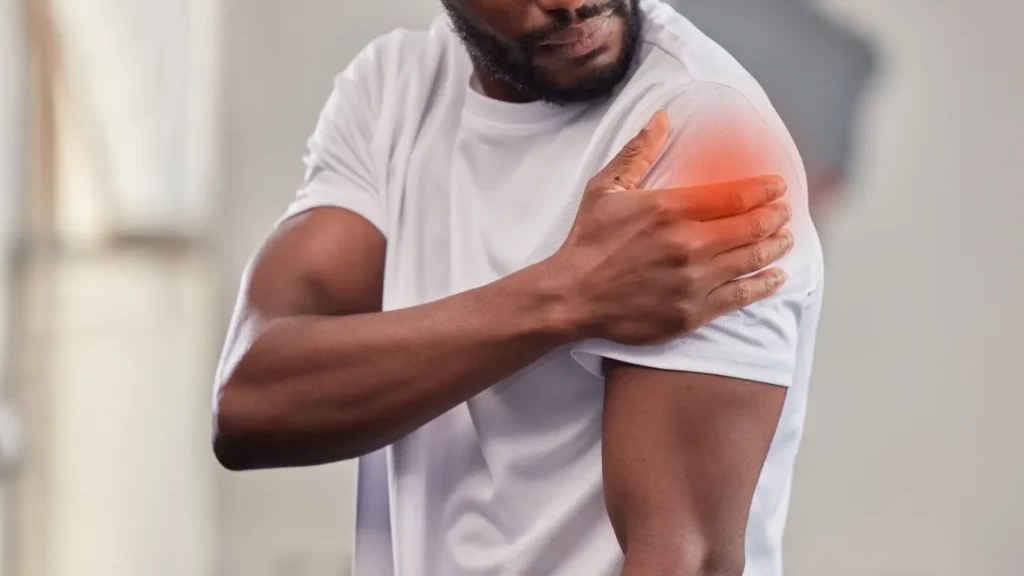Muscle Pain After Workout: How to Reduce Pain

Muscle pain after a workout and how to reduce pain is a common challenge faced by fitness enthusiasts. Understanding the reasons behind this discomfort and implementing effective strategies to alleviate it is crucial for a rewarding fitness journey. In this article, we’ll delve into the intricacies of muscle pain, providing actionable tips to reduce pain and enhance recovery.
In the pursuit of fitness excellence, post-workout muscle pain is an inevitable companion. At Aten Wellness, we understand the importance of minimizing this discomfort to maximize your training gains. Our expert team has curated a comprehensive guide to help you not only understand the science behind muscle pain after workouts but also provide practical solutions to reduce and prevent it.
Understanding Muscle Pain
The Science Behind Post-Workout Pain
Muscle pain, or Delayed Onset Muscle Soreness (DOMS), is a natural outcome of intense physical activity. When you push your muscles beyond their accustomed limits, microscopic damage occurs to muscle fibers. This leads to inflammation, triggering the sensation of pain.
Factors Influencing Post-Exercise Discomfort
1. Intensity and Duration:
The more intense and prolonged your workout, the higher the likelihood of experiencing muscle soreness.
2. Nutrition:
A well-balanced diet plays a pivotal role in muscle recovery. Nutrient-rich foods aid in repairing damaged muscle tissues.
3. Hydration:
Dehydration can exacerbate post-exercise soreness. Optimal hydration is crucial for efficient recovery.
How to Reduce Muscle Pain After Workout: Strategies
1. Proper Warm-up and Cool-down
Warming up before exercise increases blood flow to muscles, preparing them for the upcoming stress. Similarly, a cool-down routine aids in the gradual return of the body to a resting state, reducing the risk of soreness.
2. Incorporate Active Recovery Days
Integrate lighter, low-impact exercises into your routine on rest days. This promotes blood circulation, facilitating the removal of metabolic waste and reducing muscle stiffness.
3. Nutritional Support
a. Protein Intake
Ensure an adequate protein intake to support muscle repair and growth.
b. Anti-Inflammatory Foods
Include foods rich in antioxidants and anti-inflammatory properties, such as berries and leafy greens, in your diet.
4. Hydration Matters
Stay well-hydrated to flush out toxins and support the body’s natural recovery processes.
The Power of Oil Massage: How to Reduce Muscle Pain After Workout
Oil massage serves as a highly effective strategy for minimizing muscle pain by promoting increased blood circulation and reducing inflammation. The gentle yet targeted application of oils penetrates deep into the muscles, helping to alleviate tension and soreness.
Additionally, the lubricating properties of the oils facilitate smoother, frictionless movements, reducing the risk of muscle strain. This therapeutic approach not only soothes the body but also enhances flexibility, promoting quicker recovery after intense workouts.
Incorporating ATEORTHO-M OIL massage into your post-exercise routine, as detailed in our comprehensive guide, proves to be a game-changer in ensuring a pain-free and revitalized muscular experience.
Conclusion
In conclusion, conquering post-workout muscle pain involves a multifaceted approach. By implementing these strategies, you can enhance your recovery, allowing you to push your physical boundaries without being hindered by persistent soreness. At Aten Wellness, we are committed to empowering you on your fitness journey, ensuring every workout contributes to your success.


